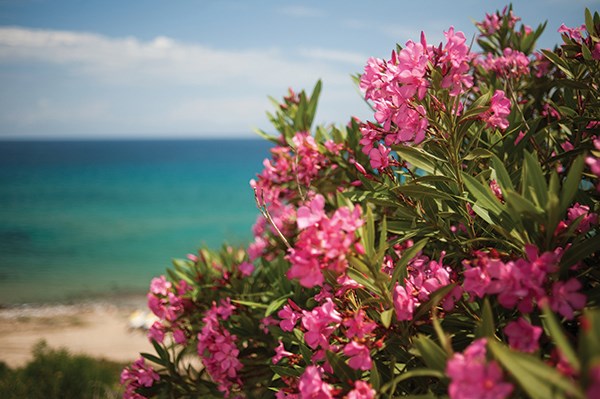Ciao from Tapenecco, a little village in northern Tuscany which we have been lucky enough to call home for the past two weeks. The region here is Lunigianna and is a different taste of Tuscany compared to the classic landscapes of Florence and Sienna.
Northern Tuscany is in the foothills of the Apennines mountains that run north/south through the peninsula connecting the Alps in the north to Etna and the Peloritani mountains in Sicily to the south.
The rolling hills and forests look familiar to home and we share similar trees like quercus (oak), fagus (beech) and carpinus (hornbeam). Unfortunately, we don’t see many 400-year-old villages and buildings, but many of the plants and shrubs are the same. The classic grape vines are here, too, and are maintained on impossibly steep terraced slopes and share space with cows and wild pigs.
Whenever I travel, I love to see plants that aren’t familiar to us in �鶹�����like myrtle, bourgainvillea and oleander. They obviously love a warm climate, but for those of you who like a gardening challenge, nerium oleander might be right up your alley.
�鶹�����has a lot of experienced gardeners who understand creating microclimates and pushing the zones – I’ve seen the palms and bananas, and lemons thriving. If you have a very hot, dry, protected area, oleander might be an exciting new option for you.
Oleander is an evergreen shrub/small tree that grows everywhere in these parts. Few plants can rival its showy flowers. Incredibly drought tolerant, once established, you see it in small manicured gardens, gracing large terracotta pots, along twisty roads and planted down the centre of the Autostrada highway.
A little research says it grows best in zones 8 to 10, but can perform surprisingly well outside of its comfort zones. A few years back Vancouver Sun columnist Steve Whysall recommend Oleander for growing in pots in sunny locations, so why not give it a try?
The beautiful blooms seem to carry on forever as they bloom from early summer to fall and are incredibly heavily scented. They prefer full sun locations with extremely well-drained soil and actually thrive in poor soil.
Oleander winter hardiness can vary depending on the cultivar. A few winter hardy varieties to consider are “Calypso,” a vigorous bloomer with cherry red flowers, or “Hardy Pink” and “Hardy Red.” which tend to be the most cold-tolerant and are good to zone 7b.
During a cold winter, Oleander may die back to the ground but the roots are generally hardy and the plant will re-sprout in the spring. If dead or damaged, branches remain after winter; just prune them back.
All parts of this lovely plant are poisonous and the sap can cause skin irritation so wear gloves when pruning or handling the plant.




